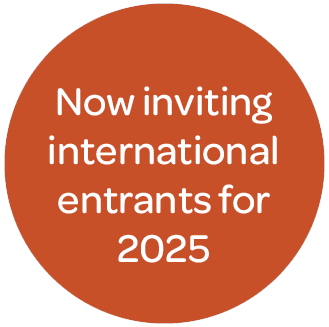Data Visualisation: Beauty, Clarity or Both?
Motif (This is Motif Limited) – 28 October 2020
Source mrweb
Data Visualisation – Beauty, clarity or both?
In the eight or so years since I began learning and studying the history and intricacies of data visualisation, I’ve often struggled with the balance between function and aesthetic. A data visualisation (more detailed definition here[1]) should be a visual representation of a quantitative truth, but does it need to entertain as well as inform? Should it aim to provide a “wow” moment for the reader, or be content with a tick in the “have they understood?” box? In a world where people simply don’t suffer bad design, is the distinction between ‘Data Art’ and ‘Data Visualisation’, that Stephen Few cited in 2012[2], still valid in 2020?
Few based his argument for a distinction on the idea that ‘Data Art’ often produced “pretty pictures that fail to inform”[3] and I’m in agreement that a visualisation without the ability to inform does more harm than good. However, in this digital age where we’re often consumed by a tsunami of data, I simply can’t agree that visualisation “rarely needs to be beautiful or otherwise artistically evocative”[4]; you need the reader to take note before they take information away.
The likes of David McCandless and other more modern information designers have had their critics (see Few here[5]), but my feeling is these criticisms come largely from data purists that aren’t always recognising the ways, means, and speeds that visualisations are now being consumed… “some experimental or creative output will be chartjunk and criticised. Just like some canonical or classic output will be boring and ignored.”[6]. There are problems with the ugly and clear in the same way there are problems with the beautiful and confusing.
Clarity should not be compromised, but beauty, albeit in the eyes of the beholder, should never be far behind. Art and science can work in harmony, they don’t need to be distinct disciplines. Ben Jones’ coordinate system[7] displays this brilliantly – the aspiration should always be ‘Quadrant I’.
From the one-page infographic that stimulates (virtual) board room discussion, or the COVID viz that pops up in my Twitter feed, now more than ever, a visualisation needs the ability to make the reader stop and think. As Michael Friendly puts it “the message in such effective graphs hits you between the eyes”[8].
So how does this relate to Market Research? I’d argue that, market research has lagged behind the likes of data journalism and marketing (albeit making some waves in recent times). As researchers we’re often so concerned with repeating the same line chart over 36 slides to ensure that all of our findings are accounted for, that we forget about the impact and the insight a moment of beauty can bring. I’d like to see the market research community make a concerted effort to move from Quandrant II to Quadrant I, taking inspiration from the artistic, creative and data journalism communities to produce visualisations that both inspire and inform.
Yet this is a voyage that should be taken with caution … with a wave of new BI and Data visualisation tools (E.g. Tableau, PowerBI etc.), it is becoming far easier to produce visually striking graphics without the need for code, and an understanding of different graphical choices etc. Are people really thinking about the rules of visualisation and understanding, or just mirroring something they liked the look of on Instagram? Few, Tufte and others are still essential reading for those embarking on such a voyage. That quest for clarity hasn’t gone away, it’s just got a better-looking companion coming along for the ride.
We should be open to revisiting these definitions and boundaries in the future too. Twenty years ago, people were celebrating the 3D pie chart as if it had changed the graphical game, now people snigger if they see one on screen. We should welcome the cross-pollination with different sectors, embrace the democratisation of data to open minds, and push the boundaries of what’s achievable within the field. Moreover, with the likes of data visualisation mixing with virtual reality (Virtualitics[9]) round the corner, and the relatively untapped world of qualitative data visualisation still to take off, we should be prepared to keep having this discussion in the months and years ahead.
Amanda Cox once said “There’s a strand of the data viz world that argues that everything could be a bar chart. That’s possibly true but also possibly a world without joy.”[10] And I feel it’s this concept of “joy” that we should really cling onto as we move forward. Let us not focus too much on classification and definition, but on providing exciting and creative visualisations that inform in insightful and original ways. Why should we settle for the functional? Let’s strive for more.
So… beauty, clarity or both? Both. The confluence of aesthetics and understanding, art meeting science is too powerful to ignore.
[1] https://eagereyes.org/criticism/definition-of-visualization
[2] http://www.perceptualedge.com/blog/?p=1245
[3] http://www.perceptualedge.com/blog/?p=1245
[4] http://www.perceptualedge.com/blog/?p=1245
[5] https://www.perceptualedge.com/blog/?p=2154
[6] https://informationisbeautiful.net/faq/
[7] https://dataremixed.com/2012/05/data-visualization-clarity-or-aesthetics/
[8] https://medium.com/@michael.friendly/visual-thinking-graphic-discoveries-128468677592
[9] https://www.fingent.com/blog/data-visualization-the-future-predictions-and-beyond/
[10] https://hbr.org/2013/03/power-of-visualizations-aha-moment
Get the latest MRS news
Our newsletters cover the latest MRS events, policy updates and research news.















